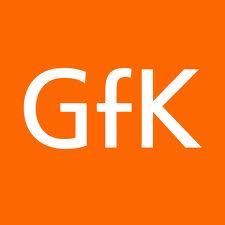 GfK findings on the consumer electronics market – first half of 2013
GfK findings on the consumer electronics market – first half of 2013
Nuremberg, 4 September 2013 – After many years of uninterrupted growth the consumer electronics market is facing major changes. Smartphones and media tablets are the most popular devices among consumers, more popular in fact than flat screen TVs. Yet, technological innovation continues to offer growth opportunities in the TV and audio segments. These are GfK’s findings on the consumer electronics market, which are published to coincide with IFA 2013 in Berlin, Germany.
As recently as 2011, a total of 262 million TV sets were sold worldwide (excluding North America). LCD TVs accounted for 81 percent of this figure. Following a boom in Japan in 2011, which was driven by government subsidies and the consequences of the massive earthquake, the local market and that of Asia as a whole shrank considerably in the subsequent year. At global level, only 242 million TV sets were sold in 2012. In Asia and the Pacific, demand also declined by 16 percent in 2012. In the same year, Europe recorded total sales of 63.5 million TV sets, which represents an 8 percent decrease. Last year, the German market, in particular, was boosted by analog TV broadcasting being discontinued. At the same time, the UEFA European Football Championship ensured strong TV business, especially in Eastern Europe. Conversely, demand for TVs was already considerably down in France and the UK in 2012.
In 2013, Europe has lacked external influencing factors like sporting events or other momentum that would contribute to sales of consumer electronics. The first quarter of the year saw a 6 percent decrease in the number of TV sets sold in Europe compared with the same period in 2012. In the second quarter of 2013, the volume fell by 14 percent. However, demand for smart TVs and 3D TVs continued to rise at the same time and especially for large screens. Approximately one in seven LCD TV sets sold in Europe has a diagonal screen dimension of more than 120 centimeters. A total of 36 percent of flat screen TVs sold in Europe connect to the internet. In Germany, the percentage of devices with smart TV technology bought by consumers is as high as 60 percent. Almost 27 percent of the sets sold in Europe in the first half of 2013 also featured the 3D function.
Optimum use of these large-screen TVs depends on getting the relevant high-resolution content onto the screen. As a result, the market volume of Blu-ray players with integrated hard disk shot up by 10 percent in Western Europe. Demand for traditional DVD players with standard resolution is falling rapidly. Compared with the previous year, the decline amounted to 26 percent.
The audio segment is also becoming increasingly important to consumers. In more and more flat screen TVs, the integrated loudspeakers fail to meet consumer expectations for home cinema quality. Accordingly, consumers invest in external sound-improving features like sound bars.
In Germany, France, the UK, Italy, Spain and the Netherlands, a sound bar was sold together with every tenth flat screen television by June 2013.
The audio market is equally benefiting from the trend towards digital sound transmission. Consumers increasingly want to be able to play the music they have on their smartphones and media players on all the other devices in their homes. “Multiroom” is the buzzword to describe wireless transmission of music from smartphone to loudspeakers in the home. In the first half of 2013, the German, French, UK, Italian, Spanish and Dutch markets for audio streaming were up by 68 percent in terms of volume. As long as the smartphone boom carries on, this trend is also likely to continue in future.
The method
Through its retail panel, GfK regularly collects data on TV and video equipment, portable audio products, camcorders, hi-fi and home cinema systems as well as in-car electronics in more than 90 countries worldwide. For the Western European market, this evaluation is based on information from Germany, France, the UK, Italy, Spain and the Netherlands for the first half of 2013.
About GfK
GfK is one of the world’s largest research companies, with almost 13,000 experts working to discover new insights into the way people live, think and shop, in over 100 markets, every day. GfK is constantly innovating and using the latest technologies and the smartest methodologies to give its clients the clearest understanding of the most important people in the world: their customers. In 2012, GfK’s sales amounted to €1.51 billion.
To find out more, visit www.gfk.com
